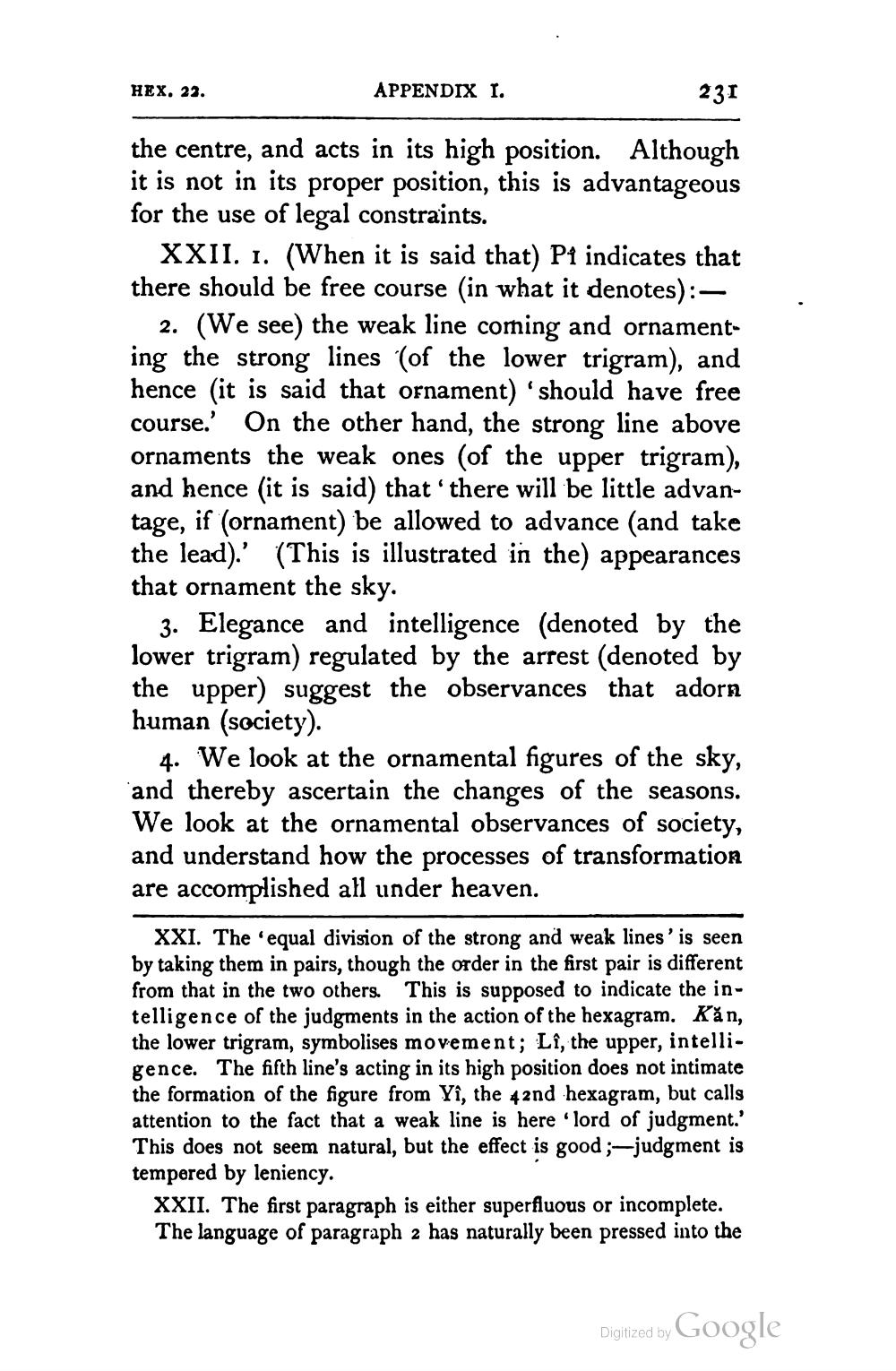________________
HEX. 22.
APPENDIX 1.
231
the centre, and acts in its high position. Although it is not in its proper position, this is advantageous for the use of legal constraints.
XXII. 1. (When it is said that) Pi indicates that there should be free course in what it denotes):
2. (We see) the weak line coming and ornamenting the strong lines (of the lower trigram), and hence (it is said that ornament) 'should have free course.' On the other hand, the strong line above ornaments the weak ones (of the upper trigram), and hence (it is said) that there will be little advantage, if (ornament) be allowed to advance (and take the lead).' (This is illustrated in the) appearances that ornament the sky.
3. Elegance and intelligence (denoted by the lower trigram) regulated by the arrest (denoted by the upper) suggest the observances that adorn human (society).
4. We look at the ornamental figures of the sky, and thereby ascertain the changes of the seasons. We look at the ornamental observances of society, and understand how the processes of transformation are accomplished all under heaven.
XXI. The equal division of the strong and weak lines' is seen by taking them in pairs, though the order in the first pair is different from that in the two others. This is supposed to indicate the intelligence of the judgments in the action of the hexagram. Kən, the lower trigram, symbolises movement; Lî, the upper, intelligence. The fifth line's acting in its high position does not intimate the formation of the figure from Yî, the 42nd hexagram, but calls attention to the fact that a weak line is here lord of judgment.' This does not seem natural, but the effect is good ;-judgment is tempered by leniency. XXII. The first paragraph is either superfluous or incomplete. The language of paragraph 2 has naturally been pressed into the
Digitized by Google




